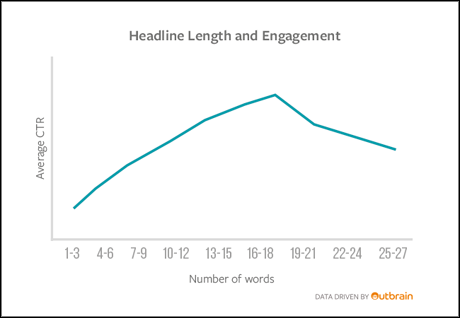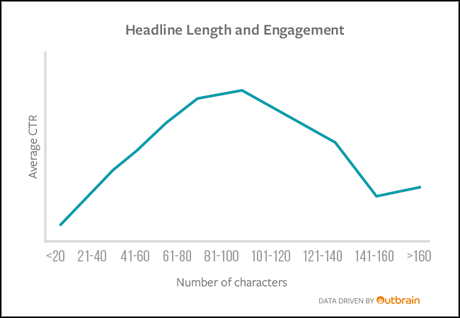
This is a sponsored article from Outbrain
Headlines and images are the 'front doors' that admit us to just about all of the content we experience on the internet daily. The 'front door' economy is comprised of consumers making a decision to click on a text headline or image linking into a story page.
The average consumer scans thousands of front doors daily, and today more than ever, it's the editor who is constructing and optimising these front doors. On large national news sites, the re-ordering of a few key words can mean the difference between a few hundred thousand people clicking into the story or not.
At these levels, the added engagement into the story pages has significant revenue and engagement impact for the publisher. Digging into the data here at Outbrain, we find some interesting practices that editors can use to optimise their site’s front door economy.
We conducted a study of 150,000 headlines submitted into our content library for distribution on Outbrain's premium publisher network. We found that, first, the number of words in a text headline can affect click-through rate noticeably. Headlines with 16 to 18 words elicited the highest click through rate.

Headlines with 100 characters also garnered the highest click-through rate.

Admittedly, these studies did not look at post click engagement, which is an important secondary metric to follow. The goal of an editor is not to propagate clickbait or write headlines that will drive bounce rates up. A bad experience with a misleading headline will ultimately alienate users.
The goal of most editors is to lift engagement, which includes the first click and subsequent clicks. That said, in order to measure engagement, you do need the first click, and there is much to be learned on getting better at getting quality, first clicks.
Here at Outbrain Visual Revenue, we have the pleasure of working with newsrooms across the globe and have uncovered some best practices that editors use to get more first clicks while also increasing engagement.
A common best practice is placing keywords upfront in the headline. For example, the headline "Environmental agency says bluefin tuna heading toward extinction" will garner more engagement if re-written with keywords upfront: "Bluefin tuna headed toward extinction, says agency".
Second, headlines that report the story tend to get significantly lower engagement than headlines that leave some part of the story to the imagination. This is a classic trope of storytelling. An editor, like a filmmaker, wants the audience to constantly ask themselves, "What happens next?" A little bit of mystery goes a long way.
For example, this headline reports the story: "Ex-FBI director to investigate Rice case", but modified to leave some of the story to the imagination – "What did NFL know - and when?" – will do significantly better.
Third, we know that when it comes to the home page, readers read left to right and want the key information, recognisable and easily understood. So we advocate avoiding the use of images that are hard to identify.Editors probably don’t get enough credit for the amount of responsibility they have for the overall health of their publications.John LoGioco, Outbrain
Also images that are small, crowded together or overly busy will usually do far worse than larger, zoomed shots of the subject in the headline. The practice of image testing is in its infancy as there is much to learn. We do know that when you A/B test a lead graphic on a home page, the impact can be staggering which in the front door economy, largely driven by editors, translates into direct revenue for the publisher.
The point we’re trying to make is that editors probably don’t get enough credit for the amount of responsibility they have for the overall health of their publications. In digital, how your content performs and how your business performs are even more intimately linked than they were in the print days, when people paid up front for your content.
Today’s online editor is making split-second decisions on a daily basis that can literally shift four and five-figure amounts for their sites, while at the same time keeping the trust of their audiences. That’s a complex undertaking.
Walking through the newsrooms of publishers like CNNMoney in New York, if you didn’t know it was a newsroom, you would think it was a financial trading floor. Most desks have three monitors and plugs for various phones and tablets.
Our goal at Outbrain is to support newsrooms like CNNMoney at the speed of news, where even the smallest data-driven insight can make the difference between 10,000 and 100,000 views on any given story.
Free daily newsletter
If you like our news and feature articles, you can sign up to receive our free daily (Mon-Fri) email newsletter (mobile friendly).
Related articles
- How do news leaders define success in their newsroom?
- Headlines Network releases guide for covering traumatic breaking news
- Headlines Network launches free mental health training for newsroom leaders
- How Nature and TBIJ measure the impact of their journalism
- Advertorial: Improving strategic content planning in your newsroom









